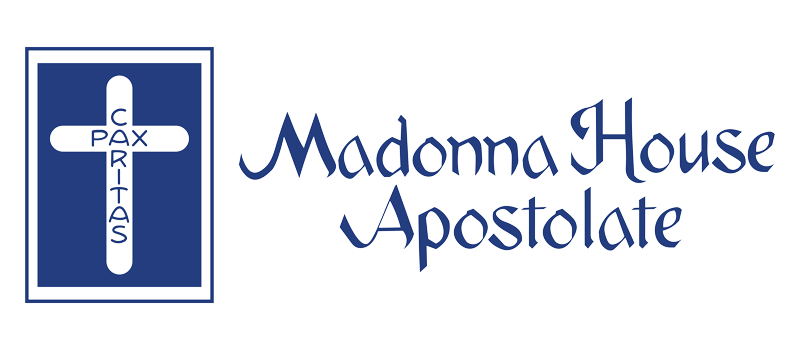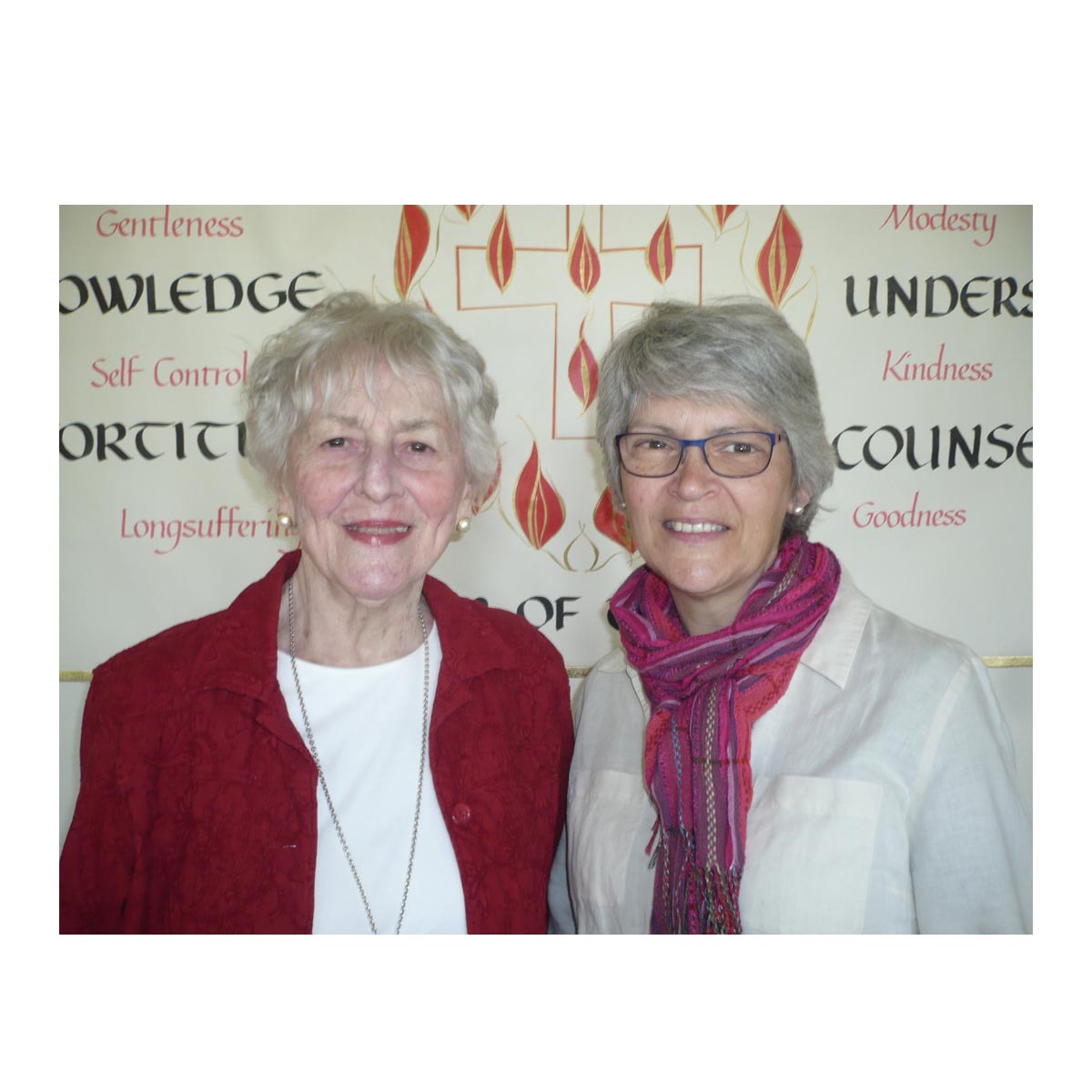This content has been archived. It may no longer be relevant
During my first visit to Madonna House in 1966, I was invited to take a boat ride down the Madawaska River on whose shores it is located. We had barely put out onto the water, when I turned and was stunned by the sight of a very large building—one that seemed out of place in this rural village.
I soon discovered I was looking at a convent school run by the religious order, Faithful Companions of Jesus, or the FCJs. The school was so large because youngsters from grades 1 through 12 were students there, and some of these were boarders.
About twenty-one years later, I was similarly stunned, as were many of us, when Madonna House became the owner of this very large building. When the FCJs could no longer operate the school, Madonna House literally saved the building from the wrecking ball through a set of providential circumstances.
The Sisters had named their school St. Mary’s, and Madonna House retained that name. The addition of St. Mary’s to Madonna House in Combermere, the building and surrounding land, was one of the most significant growth events in our seventy-five-year history.
Would we really need all this interior and exterior space now available to us? The answer to this question was and is: yes!
(Our first Madonna House priest apparently thought so, as it is said he predicted we would own it one day. He planted a medal of Our Lady of Combermere on the land many years before it was ours.)
When it became ours, St. Mary’s expansive lawn near the river became a large vegetable garden. Another corner of the land allowed for our own cemetery.
Inside the building, our men could now have a carpentry shop of a size able to include large machines, something that did not previously exist in our simpler buildings.
Similarly, a machine shop for metal work was set up. Our visual artists could now have studios; and music rooms were created for practice, storage of instruments, and a library of their books and discs.
Moreover, a smaller building on the property now houses MH Publications and provides rooms for retreats and large meetings.
To many of us, this seemed like heaven. Certainly, as time passed, we sang of the providence of our good God for providing for all these needs, spaces that would be necessary if Catherine’s large vision for Madonna House in Combermere could be realized.
But would people actually live in some of these many rooms at St. Mary’s? Again, the answer was: yes! Almost immediately, dormitories were created.
Then, by 1994, our main house had become crowded.
One day, Jean Fox, our Director General of Women at the time, walked through the kitchen and saw the cook trying to stir a pot of potatoes. It was so full that she couldn’t budge them.
That was when it was decided to form a second community within Madonna House Combermere.
This new house began with twenty-three bewildered members. These staff members were never quite sure for quite a while how this house could exist as a smaller community, separate and alongside the one they had joined.
Our members have always been assigned to missions “elsewhere,” but now the St. Mary’s people were to have a mission to create a new way of life just a half-kilometer down the road. I was one of those “missionaries”.
The first challenges were very practical. We had to figure out ways to have all our meals and liturgies at St. Mary’s. Among other things, we needed our food brought from the farm, and priests needed to be on rotation to celebrate our Masses. We also required a plan to keep this immense building clean, etc., etc.
Some of us worked within the building, and some of us went out to work, that is, at the gift shop or office or to sort donations down at what gradually came to be called the main house or the training centre. We were together, but sometimes we were scattered.
The most beautiful and inviting immediate challenge was to create a meaningful family life together. What makes a family life? Our mealtimes and liturgies were key. We also needed to plan ways of wasting time together and of meeting to communicate our deeper desires or joys or sorrows to one another.
And the challenge required each one of us to take personal responsibility and use the ingenuity of love to help this new little family to grow.
However, we did live in a certain amount of mystery as to the meaning of our daily lives. This was painful and confusing, at times. We sensed that this new community was to be marked by a certain character, but what exactly that was we did not know. We needed to trust and wait on God.
Susanne Stubbs, founding director of St. Mary’s
***
In 2017, when I was asked to move to St. Mary’s, the image of the building that came to me was that of a large ship with many portholes, a ship docked at the edge of the forest on the shores of the Madawaska River.
Now, five years later, that image is still with me, but with a change. the ship is not tethered to the dock. With Our Lady at the helm, it is heading out into the deep. We are venturing into a whole new mission field!
The group of 23 that set out from the main house 28 years ago laid the foundation, and today 50 of us call St. Mary’s home. Some of the pioneers are still living here, but there are always newcomers. Some stay for a long time, and some only for a brief stint to get a taste of the life here. I consider it a great place to live.
We have grown, evolved, and flourished and are beginning to perceive that we have a distinct life and mission. Our Madonna House statutes state that two communities comprise the headquarters at Combermere: the Training Centre and St. Mary’s Community …”
So, what then is the mission of St. Mary’s?
I can’t give you a precise answer, but here are just a few clues. It is no secret that St. Mary’s has an aging population, which doesn’t mean that we are all “old people.” The age range is from 33 to 97 and the majority are over 75.
If you were to come here early in the morning, you would see someone making breakfast for the rest of us. At other times, you would see us serving tables during meals, doing dishes, ironing, answering the phone late into the evening, or playing cards and board games together at Sunday family night.
Plus, there are those of us who spend a little more of their time praying, listening, speaking words of wisdom to hungry hearts, or simply being a quiet, peaceful presence.
The fact that older members of the community live here is no mistake. Their presence is critical to the smooth running of the “ship.” The vision of St. Mary’s is not so much about outward apostolic activity. Much of our real work is a bit more hidden.
At the “bow of the ship” is unquestionably Our Lady of the Visitation wing, where up to 8 of our brothers and sisters who require some degree of help reside.
They have the front seats on the ship and get first class views of the sunrises and sunsets reflected on the water. They also carry the masthead light to help the whole ship navigate safely through fog and storms, especially at night.
They don’t always know it, but they form a big part of the vision of St. Mary’s family.
On a ship, you can see that the sea is always changing. On the sea of life, too, the intensity in color, brilliance, and depth of our inner horizons are always changing.
Questions emerge, questions such as: Where is the Lord leading me? What is he teaching me—through this particular darkness, frustration, loneliness, rejection, feeling of abandonment?
The view sharpens with the beauty of deeper confidence in God, an abiding peace in the present moment or the poignant grace given to offer our pain for others near and far.
With our life so hidden, so interior, how can we put our finger on and define our mission statement in a neat paragraph? The vision is always opening up before us at deeper levels.
Notice all those windows (portholes) at St. Mary’s. They are there not only to let the light in, but especially to let the light out.
Inside, the very ones who occasionally wonder what they are doing here, since we don’t have an external outreach like the main house or our field houses, are the ones who carry out their responsibilities, even the smallest of tasks, faithfully.
Light is cast upon the darkness from that ship, light which goes out to the ends of the earth.
And what about the fruits of many years of faithfully living the Little Mandate? That too shines in the dark—perhaps in someone else’s dark night.
And what to say of the freshness of the youth—the young staff and visitors who brighten our rooms and hallways? They are vital beacons of hope! Their very being is apostolic!
Our mission here at St. Mary’s has much to do with discovering the face of Christ in our brothers and sisters. We are on a journey and the more we can learn, here and now, to recognize the Lord in the person in front of us, including the ones who might be wearing a “distressing disguise,” the more our joy will be full when we reach the Other Shore.
Joanne Dionne, current director of St. Mary’s





